Author Archive: ROM
Monthly Archive: December ROM
Behind the Blitz: Become the Biodiversity
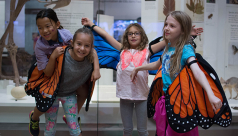
Blog by Stacey Lee Kerr, Biodiversity Storyteller / Creative Producer for the ROM's Centre for Biodiversity
At this year's Ontario BioBlitz, things are set to get a little wild... we've invited everyone to dress up as their favourite Ontario Species for our NatureFest Costume Contest. But what does it take to win a fabulous prize? Inside, in the final installment of our Behind the Blitz blog series, we've got some tips for how to come out on top, and "become the biodiversity"!
Behind the Blitz: The Heart of the Data

Guest blog by Angela Telfer, the Data Management Lead for Bio-Inventory and Collections Unit of the Biodiversity Institute of Ontario (BIO), and Database Coordinator for the Ontario BioBlitz program
Ever wonder what happens to all those observations made at the Ontario BioBlitz? Where do your species lists and iNaturalist observations go? Angela has those answers and some tips for making sure that everyone's hard work collecting data in the field is preserved and accessible to everyone for years to come.
Behind the Blitz: Eye to Eye with a Bat
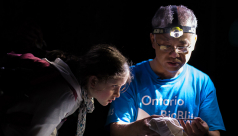
Blog by Environmental Visual Communication alumnus / Ontario BioBlitz Communications Assistant Fatima Ali
The second of four blogs in our Ontario BioBlitz: Behind the Blitz series introduces us to Saskia, a ten-year-old natural history enthusiast who was a participant in the Guided Blitz at the 2015 Don Watershed Ontario BioBlitz event. Watch a video about her experience as she follows ROM mammalogist Burton Lim into the woods with her group to capture and identify some bats!
Behind the Blitz: Three Young Scientists
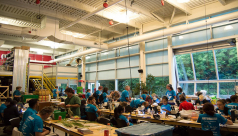
Blog by Nadine Leone, ROM Hands-on Biodiversity Gallery Assistant Coordinator
The first of four blogs in our Ontario BioBlitz: Behind the Blitz series is an interview with three young ROM scientists, who share their favourite highlights from last year's event in the Don Watershed.
Winners of the Henry's Capture the Wilderness Contest
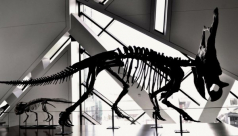
In conjunction with the ROM's Wildlife Photographer of the Year exhibition, Henry's exclusively invited ROM members to enter the Capture the Wilderness Contest which ran from February 1 - March 20, 2016. ROM Members were asked to tweet their latest and greatest tips for capturing the wilderness for a chance to win one of five SONY ALPHA A6000 Cameras equipped with a 16-50mm lens! We are excited to announce the final 5 Contest Winners.
NEW RESEARCH: Seed Eating May Have Helped Beaked Birds Survive
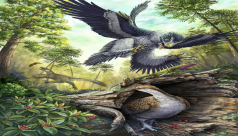
Living birds may have their ancestors' beaks to thank for surviving the mass extinction that wiped out the dinosaurs. New research indicates the closest relatives of modern birds, the small feathered raptor dinosaurs and primitive toothed birds, went extinct abruptly at the end of the Cretaceous Period, and that beaked birds may have benefitted because of their ability to eat seeds. This study is the newest to shed light on how some animals may have survived the massive meteor impact and subsequent ecological turmoil that ended the reign of the dinosaurs.
Five Answers to WP "Y?"
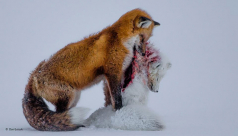
Guest Blog written by Environmental Visual Communication student Jessica Gordon
We live in an age where almost anyone with a cell phone can take a picture and share it with everyone almost instantly. In spite of this we continue to take and fall in love with photos of nature and the wildlife that surrounds us. We continue to push the boundaries of where we can go while taking cameras along with us. The question becomes: why do we still carry on the tradition? Why is wildlife photography so important to us? Here are five answers to the question, "why?".
Wildlife Photography: Behind the Camera
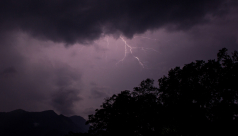
Guest Blog written by Environmental Visual Communication students Aisha Parkhill-Goyette and Jeff Dickie
Imagine you are deep in the jungle of Sri Lanka. You find yourself blinded by the pouring rain, knee deep in a rushing river, desperately trying not to fall in. Lightning strikes only meters away, but instead you are worried about the small tickle by your left elbow, and you are hoping that it is not one of the dozens of land leeches that keep falling onto you from the trees above. Not everyone has what it takes to be a wildlife photographer. It takes a special kind of dedication and a special kind of person - someone who is just as wild as the creatures they are trying to capture on camera.
EVC Students Jeff and Aisha interviewed a pair of up-and-coming wildlife photographers who travelled with ROM mammalogist Burton Lim to Sri Lanka last fall, to share some stories about what it's like behind the camera.
How Drone Photography is Saving Wildlife
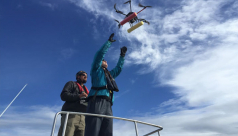
Guest Blog written by Environmental Visual Communication student Lisa Milosavljevic
A number of photos in the Wildlife Photographer of the Year Exhibit make use of aerial photography techniques, including the use of drone photography. There is also a growing demand for its use in professional and academic fields as people are recognizing how drones can be a valuable tool in their work; one of these areas is wildlife conservation. Here we are going to look at the different ways in how drone photography is saving wildlife around the world, as well as some of the controversies and questions that this developing technology raises.
#EmptyROM 3 - Hungry in the Hammer

Leslie from Hungry in the Hammer sent in some of her photos from our last #EmptyROM tour!
